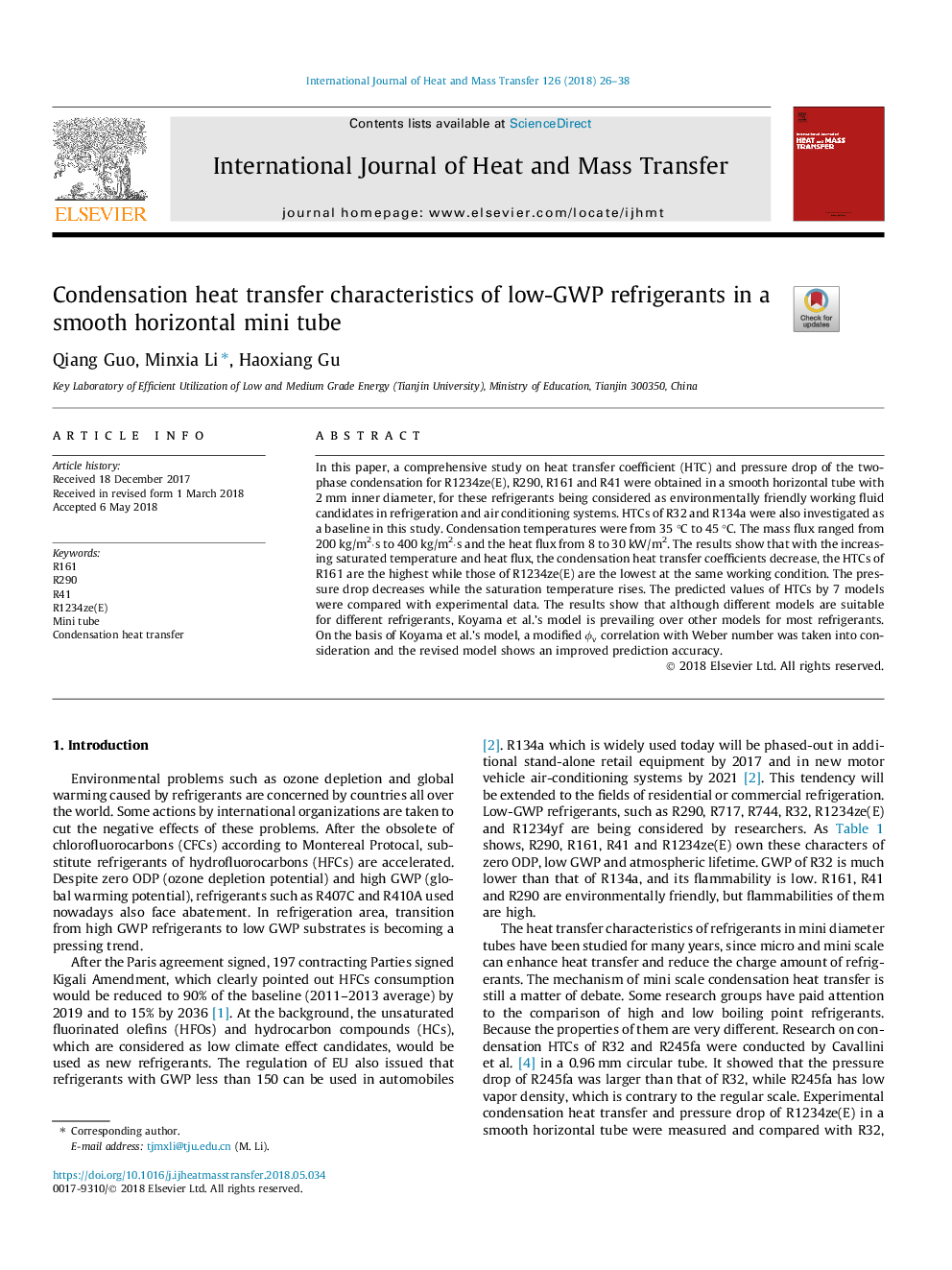| Article ID | Journal | Published Year | Pages | File Type |
|---|---|---|---|---|
| 7053852 | International Journal of Heat and Mass Transfer | 2018 | 13 Pages |
Abstract
In this paper, a comprehensive study on heat transfer coefficient (HTC) and pressure drop of the two-phase condensation for R1234ze(E), R290, R161 and R41 were obtained in a smooth horizontal tube with 2â¯mm inner diameter, for these refrigerants being considered as environmentally friendly working fluid candidates in refrigeration and air conditioning systems. HTCs of R32 and R134a were also investigated as a baseline in this study. Condensation temperatures were from 35â¯Â°C to 45â¯Â°C. The mass flux ranged from 200â¯kg/m2·s to 400â¯kg/m2·s and the heat flux from 8 to 30â¯kW/m2. The results show that with the increasing saturated temperature and heat flux, the condensation heat transfer coefficients decrease, the HTCs of R161 are the highest while those of R1234ze(E) are the lowest at the same working condition. The pressure drop decreases while the saturation temperature rises. The predicted values of HTCs by 7 models were compared with experimental data. The results show that although different models are suitable for different refrigerants, Koyama et al.'s model is prevailing over other models for most refrigerants. On the basis of Koyama et al.'s model, a modified Ïv correlation with Weber number was taken into consideration and the revised model shows an improved prediction accuracy.
Related Topics
Physical Sciences and Engineering
Chemical Engineering
Fluid Flow and Transfer Processes
Authors
Qiang Guo, Minxia Li, Haoxiang Gu,
